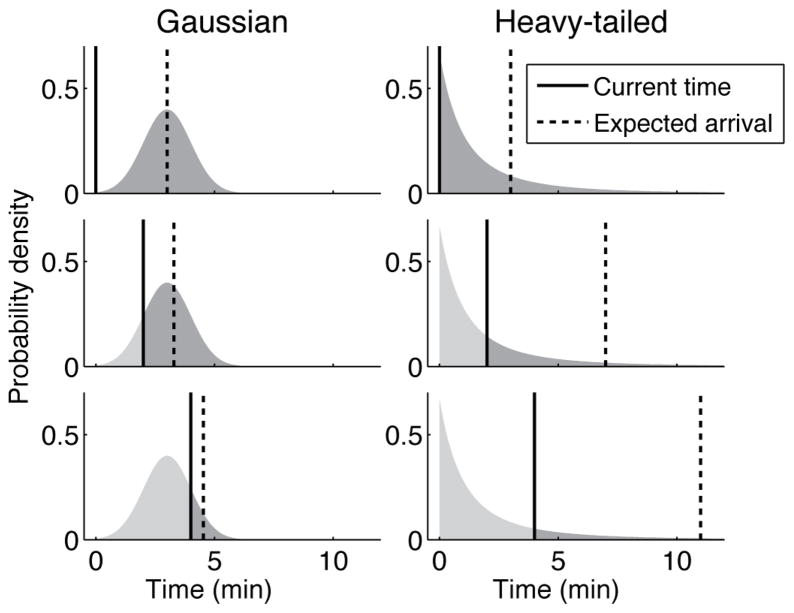Figure 1.
Schematic illustration of how time passage may change a reward’s expected time of arrival. The left and right columns represent different kinds of beliefs one might hold about an awaited outcome’s timing. The solid line represents the current time (shown at 0, 2, and 4 minutes). The dashed line represents the outcome’s expected arrival time, defined as the mean of the area to the right of the current time. For Gaussian beliefs (mean=3, SD=1), the expected delay starts at 3 minutes and grows shorter with time. For heavy-tailed beliefs (generalized Pareto distribution [see Equation 2], k=0.5, σ=1.5), the delay starts at 3 minutes and rises with time.

